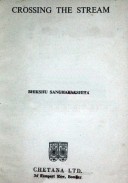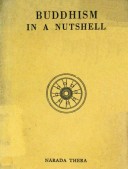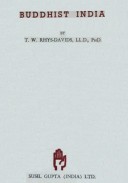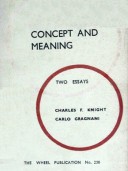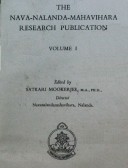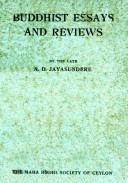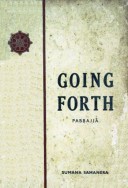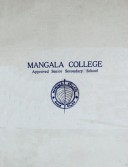Tìm Sách
Sách tiếng Anh-English >> Asoka
Thông tin tra cứu
- Tên sách : Asoka
- Tác giả : D. R. Bhandarkar
- Dịch giả :
- Ngôn ngữ : Anh
- Số trang : 400
- Nhà xuất bản : University of Calcutta
- Năm xuất bản : 1955
- Phân loại : Sách tiếng Anh-English
- MCB : 1210000002556
- OPAC :
- Tóm tắt :
PREFACE TO THE FIRST EDITION
So much has been said and written about Asoka that some of those who happen to see this book may perhaps wonder what new things yet remain to be said about that Indian monarch. It must not, however, be forgotten that the records which Asoka has left in stone are a literature by themselves, and it will take many years yet for scholars to understand clearly all that he has said. A student of Indian Epigraphy need not be told that there are passages, by no means few’ in these records, which are yet far from clear, and every day new and better interpretations are being proposed by scholars. There is, again, such a thing as piecing together the various items of information supplied by these inscriptions so’ as to give a vivid picture of the royal missionary.’ I am afraid, this work of piecing together is by no means complete yet and must continue for some more years to come. There is no section of Indian epigraphy, so .interesting and I should say so edifying, as that represented by the records of Asoka. And as I have participated not only in the work of interpretation but also, of collation and unification of his records, I hope I stand in no need of explanation for bringing out this book which sets forth my views about the Buddhist monarch.
My study of the inscriptions of Asoka began as early as 1898. There were before me translations and notes on these records not only by Prinsep, Wilson and Burnouf, but also by Prof. Kem, M. Senart and Prof. Bũhler. I devoured the contents of all these books. But none interested and benefited me so much as “The Inscriptions of Piyadasi” by M. Senart which had appeared in English garb in the pages of the Indian Antiquary. I could at once detect in the French savant not only an epigraphist, not only a scholar of Sanskrit, Pali, and Prakrit, but also a historian whose aim was to piece together the different scraps of information supplied by the epigraphic and literary records so as to form one connected whole. Chapter IV of his book thus sets forth not only the chronological position of Asoka or his inscriptions but also the extent of his empire, his administrative system, his independent neighbours, his connection with the Grecian world, his conversion to Buddhism, the nature of his Dhamma and so forth. It was M. Senart who first showed the way how to construct the history of Asoka from a systematic study of his records.
It. will thus be seen that it is nearly a quarter of a century that I have studied the inscriptions of Asoka with a view to find out what light they throw upon the history of India. What real advance, if any, I have made can be best told by scholars and historians. Eager to know, however, how far my attempt has become successful, I sent to the French savant the page proofs of the first seven chapters of this book as soon as they were available, with a request that he might tell me unreservedly what he thought about it. But for a long time no reply was received, and just as this Preface was being put in type, the long expected letter came to hand. “You will forgive a delay,” it begins, “due to the some what shaken health of an old colleague. I would have wished to thank you sooner for having sent me the good pages of your Asoka. You kindly remembered the studies which I devoted, years ago to the religious king and his precious inscriptions. How should I not be impressed by the testimony of such an enlightened judge as yourself? You can imagine that these researches of my youth are always dear and present to me. Your book leads me back to them once more. I am very grateful to it. I am grateful because it has brought me a brilliant example of the ingenious and passionate skill with which Modern India endeavours to reconstruct its past.”
- Senart is frank enough in this letter to tell me in what points he differs from me. All of these represent minor differences of opinion except one. This last is in regard to the responsibility I have thrown upon Asoka (which in his opinion the monarch little deserved) for his change of foreign policy, “for the mansuetude of his pitiful reflections,” which rendered easy the success of foreign invasions, Greek and Turanian, that infested the country after him. “It is quite possible,” says he, “that Buddhist Pacifism in the long run has tended to weaken certain people, whom it did not render more gentle except by making them less fit for action… I prefer to recognise in him simply a spirit of idealism and of deep religiousness which we know well, for it animates the whole remote past of India and it has perhaps stood for a greater spiritual honour than it has deprived India of realisations of external successes, for which it is doubtful whether its genius ‘fiver had made it fit.” When, therefore, he has favoured me with such frank criticism, one feels inclined to believe, as a sincere expression of his opinion the following that he has given to show what he thinks about my work as a whole: “It was not 80 much your purpose to establish a critical history of Asoka by a general examination of the traditions more or less in keeping with the epigraph information, but you intended to show by analysis of the inscriptions what information hitherto unexpected they can yield to a sagacious and penetrating explorer. You have been prepared for this task as nobody else by your extended familiarity with literature. It is a marvel of a singular power that by throwing light on the monuments with the help of books you have enlivened your picture.”
There are many questions connected with Asoka, which are still of a complicated nature,. One of these is the effect of his foreign policy on India. How far or whether Buddhism had spread over Western Asia through his missionary efforts is another such question. It is not possible to reach any final conclusions unless they are freely and fearlessly discussed. I have expressed my views for what they are worth, and it would now be interesting to see what different views are expressed by scholars and, above all, historians. The more diverse .these opinions are, the more are the viewpoints from which the questions may be looked at and the greater is consequently the likelihood of arriving at early solutions of them.
It is true that history, and not epigraphy, is the main object of this book. Nevertheless, time has not yet come, and perhaps may never come, so far as Ancient India is concerned, to separate History altogether from Epigraphy, Archaeology, or Sanskrit and Sanskrit literature. There are still some words and passages in the Asokan inscriptions which require to be properly interpreted or understood though Dr. F. W. Thomas has done a yeoman’s service in this field recently. I have, therefore, by no means neglected this source of our ancient history. That I have given sufficient attention to it may be seen especially from Chapter VIII which contains translation and annotation of Asoka’s Edicts.
I have said that the Asokan inscriptions have engrossed my attention for a quarter of a century. But I cannot help adding that much progress in this respect I was able to achieve only when I came to Calcutta to occupy the Chair of the Carmichael Professor of Ancient Indian History and Culture and breathe in the pure intellectual atmosphere of the Calcutta University, which is the unique creation of the monumental genius of the late Sir Asutosh Mookerjee, Sarasvati, whose guidance, I should say, providence, in the development of the post-graduate studies is now for ever lost to us. He was especially interested in the publication of this book. And it will for ever be a matter of extreme regret to me that he was not spared just a little longer to see this book which has now come- to light after being two years in the press.
The Index of this volume is the work of Mr. Girindramohan Sarkar, who was my pupil some time ago. As regards proof-reading and general help, I am highly indebted to Mr. Jitendranath Banerjea and Mr. Nanigopal Majumdar, Lecturers of the Calcutta University, and also to my pupils Mr. Rakhohari Chatterji and Mr. Chintaharan Chakravarty. And I cannot better conclude this Preface than with the words with which the French savant concludes his letter: “To this famous ancestor you, true to the beautiful traditions, familiar to solid knowledge, wanted to render the tribute of your researches and the inspirations of your patriotism. If I cannot, in order to do you full justice, enter into a detail which would compel me to exceed the limits of a letter, allow me at least to address to you my hearty felicitations. I like to place this fertile union of sympathy and work—in which the piety of India and the respectful curiosity of the West should join—under the patronage of our hero in common.
- R. B.
PREFACE TO THE SECOND EDITION
It was in September, 1928, that I was informed by the Assistant Registrar, Calcutta University, that the stock of my book on Asoka was practically sold out and that a second edition of the same would be necessary. But to prepare the book for the second edition was a matter of no small difficulty. In the first place, I had to give my careful attention to what the critics of my book had said. Secondly, there were many scholars who had written about Asoka or his inscriptions after the first edition was out. Thirdly, in the course of my studies and preparation for lectures to the Postgraduate classes, I had myself lighted upon many new interpretations and angles of vision. All these scattered rays had to be brought to a focus. This meant time. Besides, I myself was keeping anything but good health for a long time. This is the reason why so much delay has occurred in bringing out this second edition.
As regards the reviews that were published of my book, some contained nothing but praise about me and my work. I will make no mention of them. There was however one review which was a condemnation of my book, from beginning to end. It was published in JBORS., Vol. XT, pp. 402-3, and I request scholars to read it at least once, and find out who wrote it and how it came to be published. That will surely conduce much, if not to their scholarship, certainly to their psychological research. That will also convince them that Patna has been correctly identified with Pãtaliputra where Kautilya and Bãkshasa as well as Asoka and Chandragupta- Vikramãditya flourished.
Of the remaining reviews of my book there are only four which are worth noticing. The first of these was written by Dr. Jarl Charpentier in JBAS., 1925, p. 805 ff.; the second by Dr. S. K. Belvalkar in ABOBI., Yol. vn, p! 166 ff.; the third by the late Mr. s. M. Edwardes in IA., 1926, p. 239; and the fourth by Truman Michelson in JAOS., Vol. 46, p. 256 ff. Edwardes winds up his review with the following remarks: “I have said enough to indicate that Dr. Bhandarkar’s book is full of information as one would expect from a scholar of his reputation, and contains suggestions of much interest to all who ponder over the problems of India’s past history.” Dr. Belvalkar expresses his opinion of the book in this manner: “It is perhaps hardly necessary to enumerate in this fashion all the points in which Prof. D. B. Bhandarkar has made a distinctive contribution to Asokan scholarship. A careful perusal of the book enables one to visualise the pious Monarch and his manifold religious and administrative activities to a much better extent than had been hitherto possible with the Asokan literature already in the field. To build up out of the dead lithic records of this mighty emperor such a living, speaking likeness of Asoka the man with all his frailties and his noble aspirations is certainly an achievement of which any scholar might well be proud. The first of these critics was an Editor of the Indian Antiquary and was the scholar who revised and practically overhauled the Fourth Edition of the ‘Early History of India’ by V. A. Smith. The second is Professor of Sanskrit in the Deccan College, Poona, and Editor of, the Government Oriental -Series, Bombay. Both the critics have spared no pains to point out the blemishes of my ‘Asoka,’ and Mien they express the opinion they have done of the book as a whole, it cannot be doubted that their opinion is impartial and carries some weight. See now what Dr. Charpentier has said about it. “Professor Bhandarkar’s name,” says he, fl holds a high rank within the scholarly world of India, and the present writer therefore feels it somewhat painful to admit that his latest book is a heavy disillusion. The author has on the whole very little new to add to the results of his predecessors, and where he tries to supply us with some hitherto undiscovered facts we generally feel inclined to disagree with him.” This is in direct contradiction with what the late Mr. Edwardes and Dr. Belvalkar had thought, namely, that my book was full of information and suggestions and enabled one to visualise Asoka much better. Not long after, appeared the review of the American scholar, Dr. Truman Michelson, containing a more detailed criticism of my book. Edwardes was a historian, not an epigraphist or a philologist; Prof. Belvalkar is both a Sanskritist and an historian though not an epigraphist. Naturally therefore their criticism was concerned with the history portion of my book. Dr Michelson on the other hand is a philologist, not an historian. His criticism was therefore directed against that part of my book, which comprised the Notes and Translation of Asoka Inscriptions. And if anybody peruses this review carefully, he cannot but be convinced that Dr. Michelson has Apt at all feared to differ from me in many places. And yet in this review he says: “In this connection it may be observed that the notes on the translations are ordinarily very full, so that even the publication of the new edition of C. I. I. will not render this part of Bhandarkar’s work superfluous; and it cannot be denied that occasionally be has made real contributions in the interpretation (e.g. the sense of samãja).” Evidently by ‘C. I. I.’ he means the Inscriptions of Asoka brought out by E. Hultzsch. This itself will show what the American scholar thinks of my book. The contributions made by Michelson to Asokan studies are too well-known to require any mention and are equalled only by those of Senart, Biihler and Luders. When therefore the above remarks of Dr. Michelson Acquired publicity, everybody in India began to wonder how that Professor of Upsala saw no good whatever in my book.
The truth of the matter is that Dr. Charpentier does not seem to have read any part of the book other than Chapter VII, which deals with “Asoka’s place in History.” Whatever real criticism is contained in his review is centred upon this chapter and this chapter only. If any proof is needed, it is furnished by the following remark that he makes: ‘But to Professor Bhandarkar it seems perfectly clear that Buddhism has deeply influenced Christianity—unfortunately, he does not tell us on which points, except by the somewhat vague expression “brotherhood of man”…’ Prof. Charpentier is evidently referring to p. 223 of the first edition of my book. Unfortunately he exposes his own ignorance. For pages 162-5 of the last edition do set forth on which points, according to Max Muller and myself, Buddhism has influenced Christianity. If he had at all read these pages, he would never have indulged in the sweeping remark that I have not told on which points Buddhism has influenced Christianity. It seems that he never read Chapter V of my book which treats of “Asoka as a Missionary,” and, in fact, there is no indication whatever that he read any chapter or part of it except Chapter VII about which alone he has passed what may be called criticism. As a matter of fact, if he had gone carefully over the other chapters as was done by the late Mr. Edwardes, Dr. Belvalkar and Dr. Michelson who certainly were not inferior to him in scholarship and the last of whom is decidedly superior to him in Asokan studies, I am sure he would have practically come to the same opinion that was expressed by these scholars. His aspersion therefore that my book is ‘a heavy disillusion’ is itself a fantasm of kha-pushpa held up by an Avidyã-putra. How can better work be expected of a critic who had a large number of books to review for the Journal of the Royal Asiatic Society, and who could not be expected to have any leisure to go through every one of these carefully?. But what is most inexplicable is why he, if he is a real Sarasvatlputra, should indulge in aspersions against a book which he had not the time or patience to wade through. And it is really painful how critical scholarship sinks in his case into a pious brief for Christianity or for ‘our religion as he calls it. He has thereby made a- laughingstock of himself. See, for example the criticism levelled against him in Ind. Hist. Quart., 1925, p. 784, by N. C. G., who, I am told, is a Quaker himself.
So far, however, as Dr. Charpentier’s criticism of Chapter VII of the book is concerned, I welcome it wholeheartedly. It is not possible to see eye to eye with him in most respects. Nevertheless, it is a criticism made after reading the chapter at least once and does not indulge in mere sweeping comments.
My reply to the various points of his criticism will be found in the same chapter of this edition. But I cannot help thinking that he has rushed even to this criticism without carefully and patiently reading what I have stated while comparing Asoka with Marcus Aurelius, Alexander and Caesar. He has forgotten what I have remarked on p. 229 (first Ed.) where I say that these monarchs “were probably greater warriors and greater administrators than Asoka even” but were not great men as compared to him if we have to judge by “the standard whether they rendered the world any way happier and better.” In fact, this is the point on which I have expatiated on the pages following it. Curiously enough this is just, the conclusion with which Prof. Charpentier’s review ends, for he says that “Asoka… was as a man, by far better than both Alexander and Caesar; it is just as obvious that as a ruler of man he cannot stand up for comparison with either of them.” One wonders why so many pages of tile Jour. R. As. Soc. were wasted on a point where we substantially agreed.
The case is however different in regard to the review of Dr. Truman Michelsou. As I have already remarked, he deals principally with the Translation and Notes portion of my book. It is true that he is merciless in his criticism of my views, but who can deny that be lias read very carefully what he is criticizing? It is also true that sometimes his philological enthusiasm overshoots the mark. Nevertheless, it cannot be gainsaid that almost the whole of his criticism is sound and thought-provoking. And he has set it forth in such a detailed and thorough fashion that one feels that it is Buhler or Senart that is speaking through him. I confess I have profited much by his comments, and if the second part of this edition has made any advance over the first the credit is chiefly due to this American savant. If a copy of this book is again sent to the Royal Asiatic Society for review, as I hope it will, and if Prof. Charpentier is again entrusted with the work, he will do well to tread in the worthy footsteps of Dr. Michelson and furnish us with constructive criticism which will enable me to improve this book still further if it ever runs into a third edition. He need not use the polite language of the late s. M. Edwardes, but let his criticism be based upon a careful perusal of the whole book. His language may be rugged and brusque like that of Asoka, but let there be sincerity and thoroughness behind it as it was behind the work of that Buddhist Emperor.
Some of my friends were urging me to recast this work of mine into a convenient text book for the students who offered Asoka as a subject of study for M.A. This however means that the University students even in the M.A. stage should not develop the library-going habit and should not form firsthand acquaintance with the works of Senart, Buhler, Michelson and Luders, or for the matter of that) with any such learned periodicals as the IA.) JR AS., and so forth. In other words, it means that even the M.A. students should not learn how to cook their own dish, but should be served with ready-made food just as the undergraduate students are, when they are supplied with the annotated editions of Scott’s ‘Lady of the Lake’ or Burke’s ‘French Revolution.’ If my work had been similarly converted into a cram book of Asoka’s inscriptoins, that would have doubtless brought more money to the Calcutta University but also perhaps cast a slur upon the noble edifice of Postgraduate studies which was built up by the transcendent genius of the late Sir Asutosh Mookerjee and to which I have the honour to belong. No University Professor who has a capacity or passion for research work, ought ever to stoop to bring out a copiously annotated edition of any book or text he is lecturing upon to the M.A. students.
The Index of this book is the work of Messrs. Dinesh Chandra Sircar and Charu Chandra Dasgupta, who up till recently were my pupils. The first of these again gave me occasional help in the laborious task of proof-reading. In conclusion, I am exceedingly thankful to Mr. J. C. Chakravorti, the Assistant Registrar, and Mr. A. C. Ghatak, Press Superintendent, without whose help and forbearance it would not have been possible for me to bring out this edition in the present state of my health.
- R. B.
CONTENTS
Chapter I – Asoka and his Early Life
Chapter II – Asoka’s Empire and Administration
Chapter III – Asoka as a Buddhist
Chapter IV – Asoka’s Dhanmia
Chapter V – Asoka as a Missionary
Chapter VI – Social and Religious Life from Asokan
Monuments
Appendix
Chapter VII – Asoka’s Place in History
Chapter VIII – Asoka Inscriptions Index
 Facebook
Facebook
 Google
Google
 Google+
Google+


